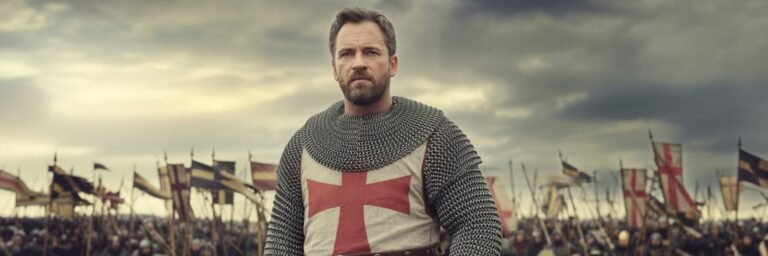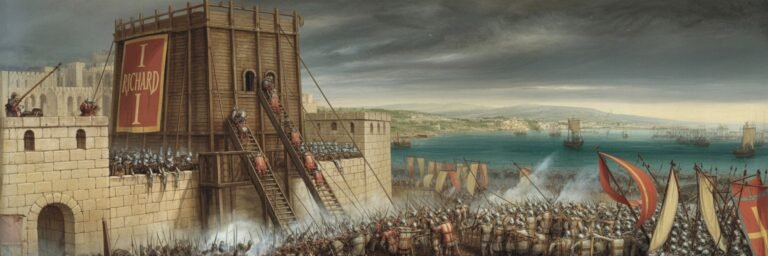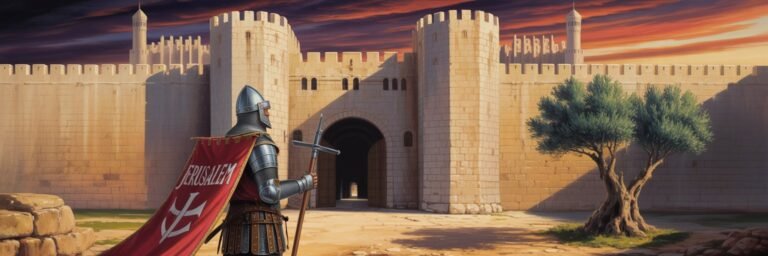INTRODUCTION
The flow of history is interwoven with the grand narratives of conquests, dynastic disputes, ideological escalations, and cultural clashes, all profoundly altering the trajectory of human civilization. One such narrative that has left an indelible mark on world history is that of the Crusades, a series of religiously inspired military campaigns launched by Christian Europe against predominantly Muslim territories in the Middle East. Understanding what really happened during the Crusades is an intricate task, wrapped in centuries-old legends and interpretations, often refracted through the prism of our subjective perceptions.
HISTORICAL BACKGROUND
The term ‘Crusades’ refers to a series of military expeditions carried out between the 11th and 16th centuries, primarily by European Christians, with the dual goal of reclaiming the Holy Land from Muslim control and defending Christian territories. The spark that set off the First Crusade was a plea for assistance by Byzantine Emperor Alexios I Komnenos. Under Turkish onslaught, the Byzantine Empire was on the brink of collapse, and the emperor saw the potential for the West to provide the support needed to hold back the Turkish advance.
In 1095, Pope Urban II responded to the call with his famous speech at the Council of Clermont, where he called upon the warring European nobility to unite in a holy war against the Muslims to reconquer the Holy Land. This event marked the beginning of the First Crusade, a campaign not just of territorial ambitions but also cloaked with theological undertones. Over the next two centuries, several more crusades were launched with varying degrees of success and methodologies.
THEORIES AND INTERPRETATIONS
Interpretations of the Crusades are as diverse and multifaceted as the history they try to decipher. Some scholars, like Steven Runciman, have espoused the view that the Crusades were a holy war waged by a barbaric West against a sophisticated and enlightened Islamic East. In contrast, others, such as Jonathan Riley-Smith and Thomas Madden, reject this idea, arguing that the Crusades were more complex, driven by a combination of genuine religious fervor, political machinations, and economic incentives.
Leftist historians have often interpreted the Crusades as a form of early imperialism, inspired by economic greed and territorial expansion, while conservative historians tend to focus on the religious elements, viewing them as a defensive response to centuries of Islamic expansion.
Alternative interpretations have explored the sociocultural aspects of the Crusades, emphasizing the exchange of ideas, technology, and arts between the East and West, which arguably heralded the dawn of the Renaissance.
MYSTERIES AND CONTROVERSIES
The Crusades, like any other historical phenomenon, are shrouded in mysteries and controversies. One central debate revolves around the real motivation behind Pope Urban II’s declaration. Was it solely religious devotion, or were there hidden political and economic agendas?
Another controversy pertains to the Crusaders’ often brutal treatment of non-Christians, including Jews, Muslims, and Eastern Christians, culminating horrifically in episodes like the massacre of Jerusalem. Some historians argue this brutality was integral to the Crusader ethos, while others claim it was circumstantial, brought on by the harsh conditions of the campaign.
The mythical element of the Crusades – tales of the quest for the Holy Grail, the Knights Templar’s reputed hidden treasures, and the elusive kingdom of Prester John – further intensify the mystery and lure of these campaigns.
SYMBOLISM AND CULTURAL SIGNIFICANCE
The Crusades have wielded a profound symbolic and cultural influence, shaping the collective psyche of societies for centuries. The Crusaders’ red cross became an enduring symbol of the West’s resistance against perceived infidels. The concept of ‘holy war’ was etched in the faith and practice of both Christianity and Islam, forming a deep-seated paradigm that bears prevalence even today.
The Crusades also led to landmark cultural exchanges, infusing Western Europe with the sophisticated arts, sciences, and philosophy of the Islamic world. Crusaders returning home brought with them knowledge, ideas, and motifs that greatly influenced European art, architecture, literature, and thought. This ‘clash and synthesis’ of cultures shaped the course of intellectual history well into the Renaissance.
MODERN INVESTIGATIONS
Modern historians and archaeologists are continually reevaluating our understanding of the Crusades. Incorporating fresh archaeological discoveries, religious texts, and an increasingly global perspective, they offer a more nuanced appraisal of this complex period.
Investigations into fortifications built by Crusaders, massive projects like Krak des Chevaliers and the Citadel of Salah Ed-Din, reveal detailed insights into the Crusaders’ martial culture and their interactions with indigenous populations. The recent excavations at the city of Acre, a pivotal Crusader stronghold, have unearthed troves of artifacts that challenge traditional narratives about Crusader life.
Recent scholarly trends also espouse comparative investigations, analyzing the Crusades alongside their Islamic counterparts, the Jihad. These studies explore the mirror-like dualism between the two phenomena, illuminating a binding narrative of conflict and symbiosis.
LEGACY AND CONCLUSION
The Crusades left a profound legacy that continues to reverberate through modern politics, culture, and faith. The division they cemented between Christianity and Islam continues to influence many geopolitical realities. Similarly, the foundations of modern Western notions of heroism, chivalry, and martyrdom were greatly shaped by the Crusader narrative.
However, the Crusades also provided a stage for intercultural contact, exchange, and absorption, playing a pivotal role in the revival of Classical knowledge that sparked the Western Renaissance. While their legacy is shrouded in controversial shadows of religious extremism, intolerance, and violence, it’s vital to also recognize their contribution toward shaping our world.
The Crusades remind us that history is never a simple tale of ‘good vs. evil.’ Understanding them requires a delicate examination of intersecting cultural narratives, geopolitical complexities, and human motivations. Our quest to decipher ‘what really happened’ illuminates that history is not just about events—it’s also about their interpretation, transmission, and lasting imprints on collective memory.



